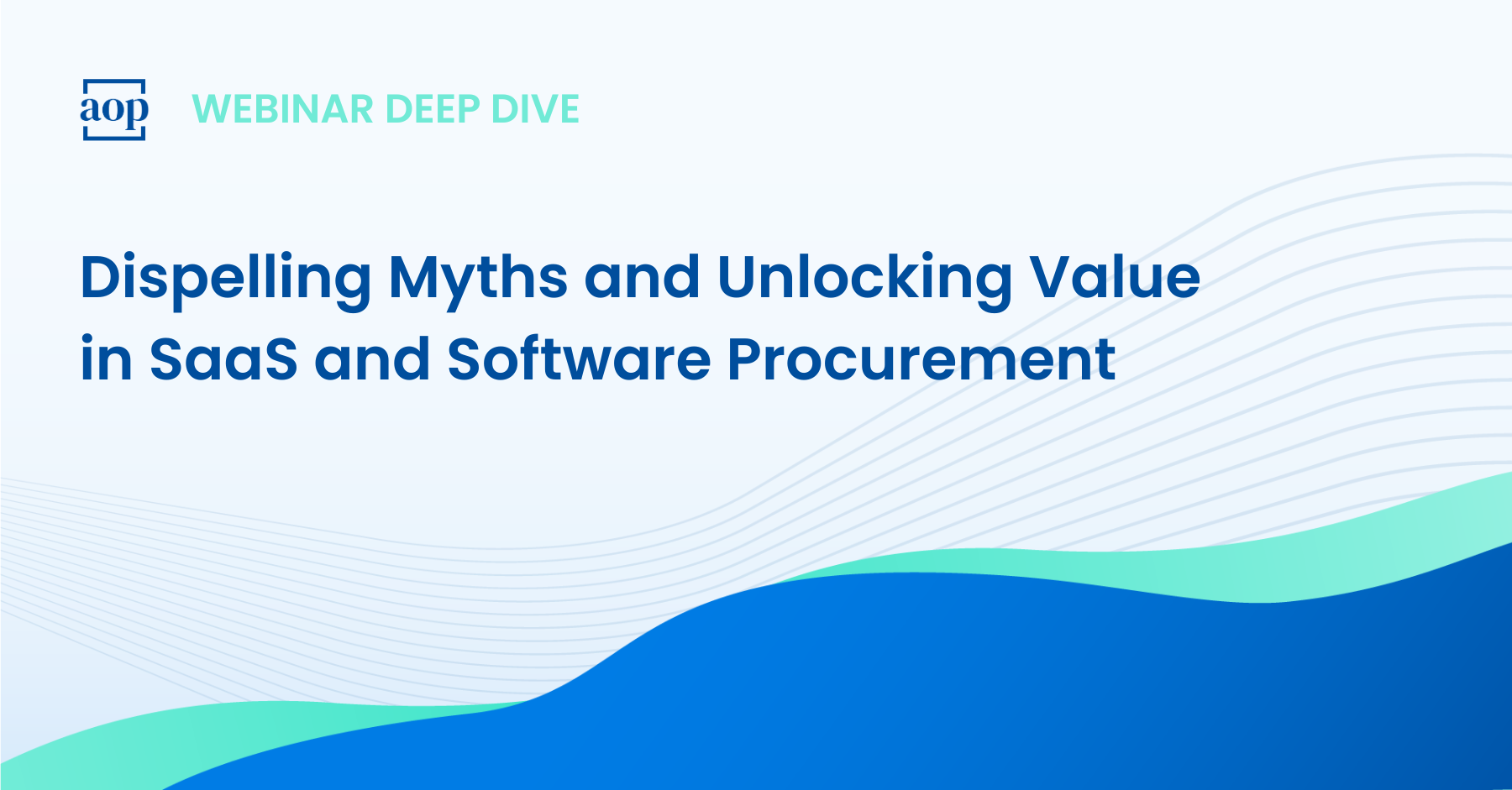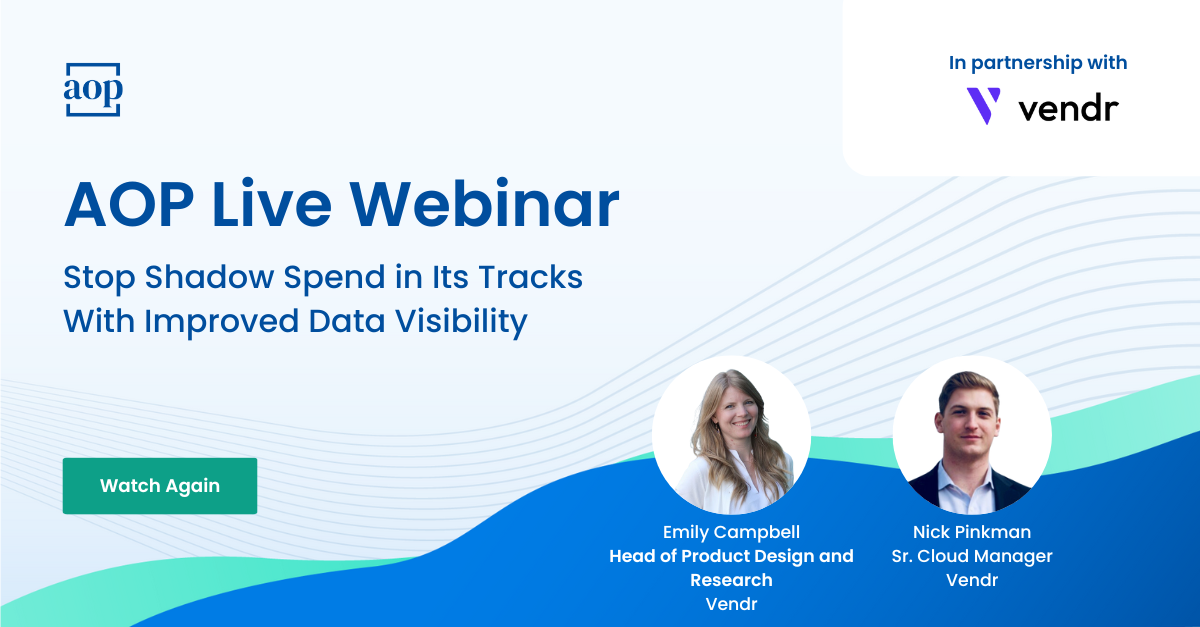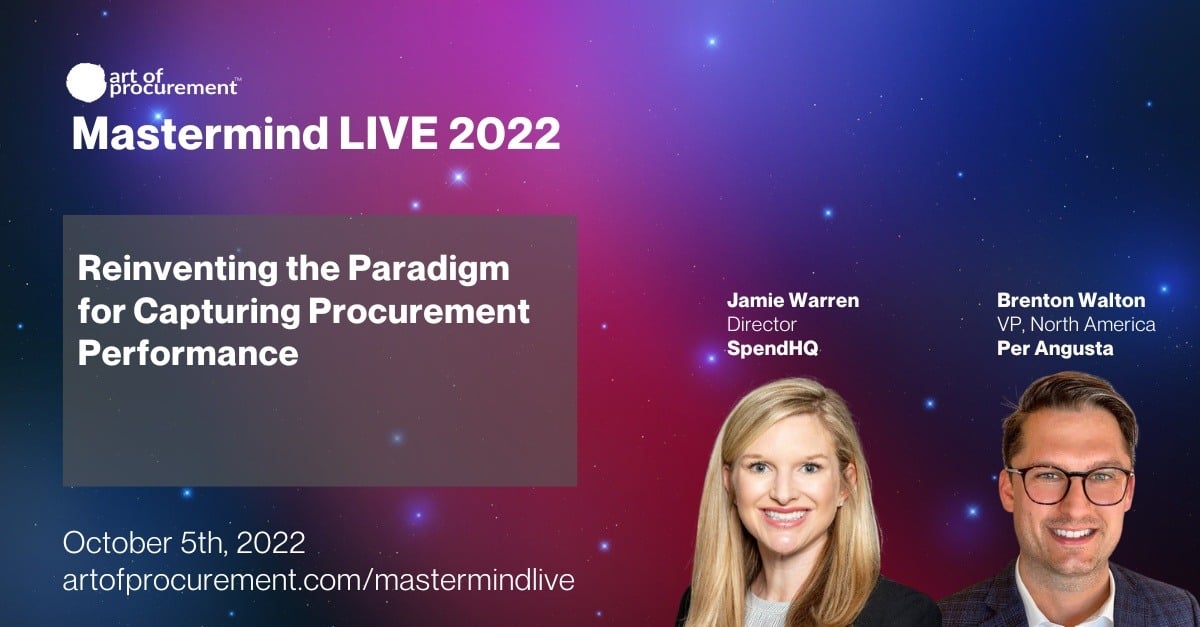2 min read
Dispelling Myths and Unlocking Value in SaaS and Software Procurement
Philip Ideson : December 5, 2023

Sourcing and purchasing software, especially SaaS products, can sometimes feel like an uphill battle for procurement.
It’s not an “easy” category to manage, if there is such a thing. The timelines can be tight, the stakeholder network is often complex, and negative perceptions around procurement’s value contribution to software buying can lead to poor collaboration or worse: outright resistance.
Fortunately, these negative perceptions are often rooted in commonly held myths that, when we look at the data, simply aren’t true. Holding on to them isn’t only to the detriment of an underutilized procurement team but also to the business as a whole.
In a recent AOP Live Session, Kelly Barner and I spoke with Aubrey Zimmerman, Procurement Analyst at Lattice, and KR Barron, Principal Product Marketing Manager at Productiv. We reviewed our own recent research on the subject and discussed some of the more pervasive stakeholder objections to procurement’s role in software purchasing.
One of the most common is around time. Company leaders often, mistakenly, believe that involving procurement in software or SaaS selection drags out the process unnecessarily. Our data shows quite the opposite; this is a myth that may be holding procurement back from value contribution.
As KR said, “There is this misconception that procurement is handling everything – that it’s just procurement – when really there are a lot of teams involved in the purchase cycle. There are requirements for each time, and time needed for each team.”
Once stakeholders understand the process and the “why” and “who” behind procurement timelines they are often more accepting and collaborative, she said. But, it’s up to procurement here to raise awareness and educate stakeholders so they can level-set expectations.
That education often includes bringing clarity to procurement’s role, which is commonly misunderstood. Many stakeholders, KR said, “think procurement professionals are paper-pushers – that we are not strategic business partners – and we are just there to move things from one place to another.”
When procurement is recognized and empowered to become a key strategic partner, they are able to guide the organization towards informed and value-driven decisions for software purchasing (and beyond).
It comes back to awareness, education, and communication about procurement’s full potential to support the business. I’m reminded here of the old “show, don’t tell” saying in education, which means vivid descriptions are much more powerful tools of communication and persuasion than simply stating the facts about what is happening.
“Give them that white-glove experience,” said Aubrey. “Show them out of the gate the value that they are going to get from procurement, like how much time they are going to save, or that they don’t have to go back and forth with all these suppliers, and that they have somebody liaising through all the teams and tracking everything down to make sure everything is being completed.”
Procurement, it seems, would benefit from more “showing” when it comes to their ability to contribute value to the software category. That could go a long way to busting these myths – which are not doing anyone, including stakeholders, and good – and convincing the business of procurement’s strategic potential.




